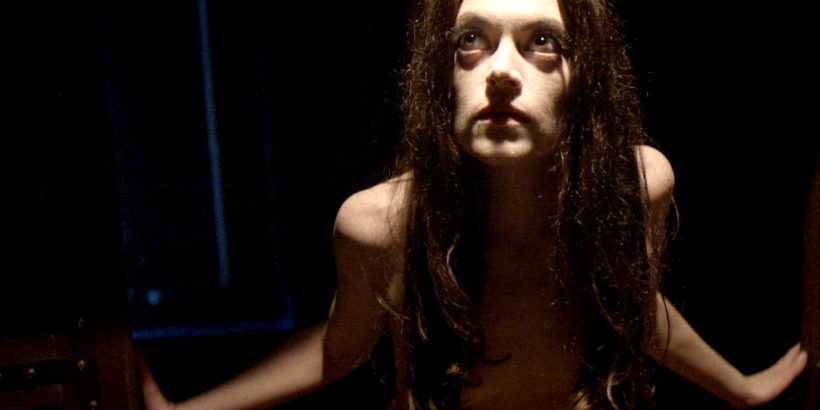Throughout history, women have been shamed for their sexuality and scared into assimilating via propaganda perpetuated by religion and folklore. We’ve all heard the myth of Pandora’s box and have seen the way Christianity perpetuates purity culture, but are you familiar with the ‘lore of succubi? Traditionally, succubi (singularly referred to as a succubus) are demons or other supernatural entities who appear in the form of a beautiful woman to seduce men in their dreams through sexual activity. In early ‘lore, repeated sexual encounters with a succubus caused decreased physical and mental health, often resulting in death. The word succubus comes from the Late Latin word succubare, which means to lie beneath and refers to the demon’s implied sexual position. Over the years, a succubus has changed forms and has even enchanted the world of popular culture.
When discussing succubi, everything goes back to one woman and that’s Lilith. According to Jewish folklore, Lilith was Adam’s first wife and they were both created at the same time as equals. In the early texts, Lilith is depicted as a demon and no better evidence of her being portrayed as a succubus can be found in the Zohar:
“She roams at night, and goes all about the world and makes sport with men and causes them to emit seed. In every place where a man sleeps alone in a house, she visits him and grabs him and attaches herself to him and has her desire from him, and bears from him. And she also afflicts him with sickness, and he knows it not, and all this takes place when the moon is on the wane.”
As time went on, Lilith continued to be explored through texts of religions and cultures around the world, with more contemporary scholars (by that, we mean 11th century) citing that she left Adam in the Garden of Eden after refusing to be subservient to him—in turn becoming history’s first feminist.

Over time, many other cultures began portraying succubi in their ‘lore beyond just Lilith, such as the sirens of Ancient Greek mythology. By the 20th century, the succubus migrated from religious texts and began appearing in popular culture through literature, film and television. One of the first examples of a succubus appearing in modern fiction can be seen through Toni Morrison’s 1987 novel “The Beloved.” In this novel, Morrison tells the story of a family of former slaves whose home is haunted by a malevolent spirit referred to as the Beloved. The Beloved preys on the character Paul D, demanding sex from him and in turn using her powers to force him to relive the traumas of his past. Her character brings madness and chaos into all the characters’ lives, showing the psychological toll of slavery.

By 1994, succubi entered the gaming world through the gothic horror fighting game, “Darkstalkers.” In this game, monsters of all kind go head-to-head in combat, including a succubus named Morrigan Aensland. In the series, Aensland is a succubus and extremely powerful princess of the demon realm Makai. She’s portrayed as an antagonist and her primary weapon is her transmorphic wings. In the game, the designers eventually made reference to the OG succubus, creating another character named Lilith. To this day, she remains one of the most iconic and frequently cosplayed characters in gaming as a whole.

The succubus went into hiding throughout much of the 1990s and early 2000s, largely in favor of other movie monsters such as vampires, werewolves and mermaids. This was until the succubus was reborn and arguably brought into the mainstream through the 2009 film “Jennifer’s Body.” In this film, which was written by Diablo Cody and directed by Karyn Kusama, Megan Fox plays a teenage girl named Jennifer Check who becomes a succubus after a sacrifice performed by an indie rock band goes awry. The band initially mistakes her to be a virgin, however, since she’s not, she becomes a demon that sustains herself by preying on teenage boys. The film shines a modern and nuanced light onto the idea of a succubus by incorporating themes of female empowerment and the bonds of female friendship. It’s a film that upon release received negative reviews from critics, but after over a decade of retrospection, the film has gained a newfound respect among audiences.

A year after “Jennifer’s Body” hit theaters, another succubus hit the small screen. In 2010, “Lost Girl” premiered on television and starred Anna Silk as a succubus named Bo. Throughout the show’s five season run, Bo learns to control her supernatural abilities, to help those around her and about the origins of her mysterious past. What set this depiction of a succubus apart was it showed Bo as a positive protagonist. It didn’t rely on her sexuality in a way that felt objectifying or one dimensional, instead portraying her as a complex and relatable character. This show also chose to make Bo bisexual, showing that her sexuality in the story wasn’t limited exclusively to men. And for a show that premiered over a decade ago, this was pretty monumental.

Following “Jennifer’s Body” and “Lost Girl,” succubi have popped up here and there in popular culture. Perhaps the most recent and relevant portrayal comes through the 2012 horror film “V/H/S” and it’s 2016 spin-off “Siren.” In “V/H/S,” which includes a series of found-footage style shorts, we are introduced to a succubus named Lily. Lily appears in the short entitled “Amateur Night,” in which a group of men book a motel room and go on the prowl for women to bring back for sex, with the intention of creating an amateur porn film. At a bar, they meet Lily, a mysterious and quiet young woman whom they take back to the motel. Back at the motel, the trio soon discovers that Lily has clawed feet, scales and later, fangs and wings. She proceeds to attack each of the men, eventually flying off into the distance with her chosen prey.
Lily returns for the spin-off film, “Siren” in 2016, which gives more insight into the backstory of her character. In this film, a bachelor party visit an underground club where the soon-to-be groom finds Lily chained up in a room. He frees her, but then realizes she’s a demon and has imprinted onto him. Many fans praised “Siren” as a great expansion of the celebrated short and enjoyed the performance of Hannah Fierman, who portrayed Lily as a sympathetic character throughout the film.

It’s been five years since “Siren,” which means it’s about time for another succubus to take over popular culture. How do you see the future of succubis in film and television? Let us know your thoughts on succubis in media and this story in the comments section on social media.



